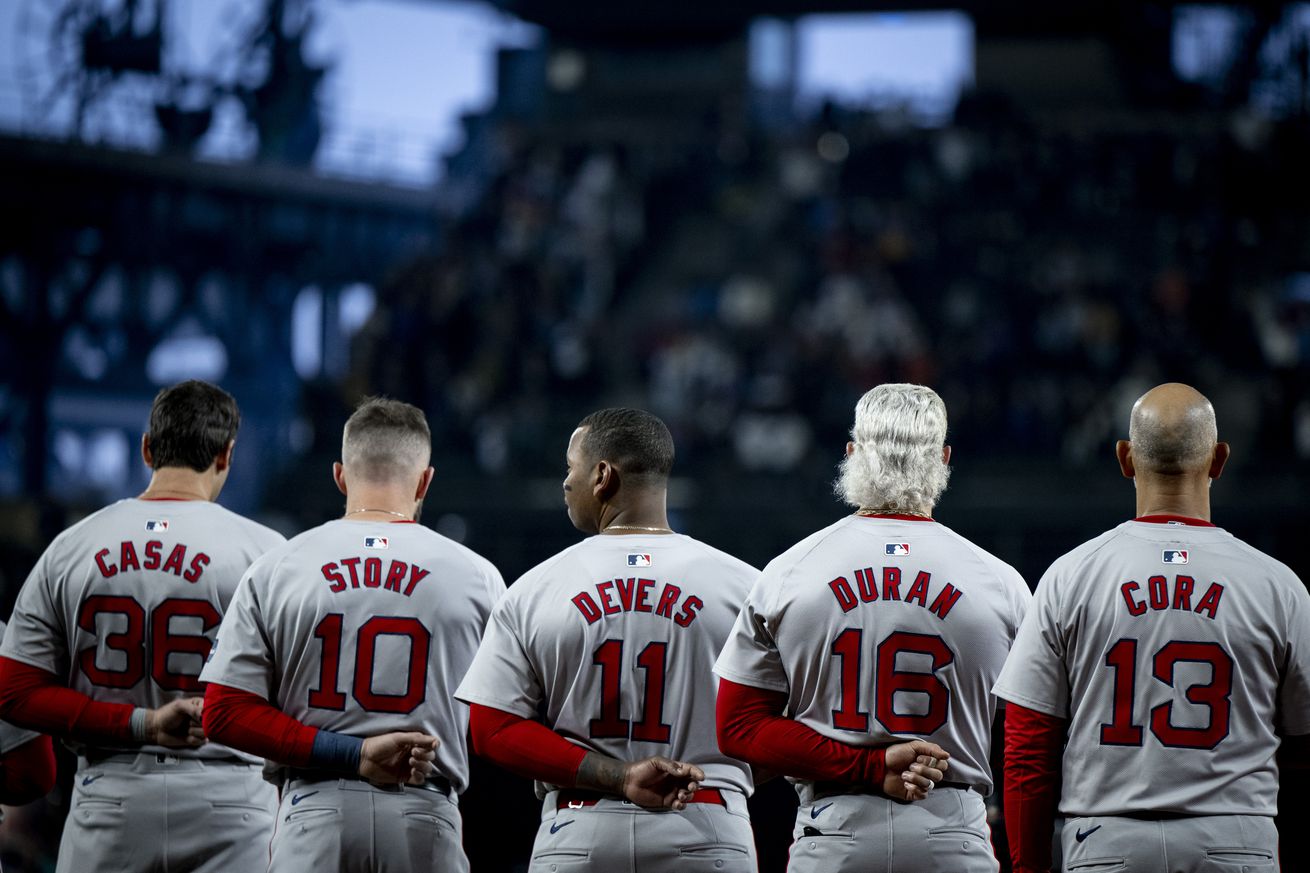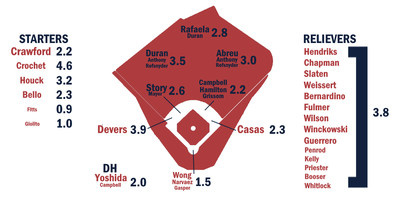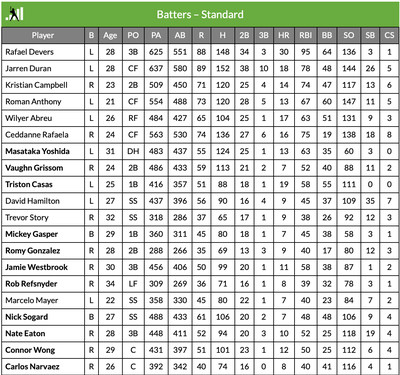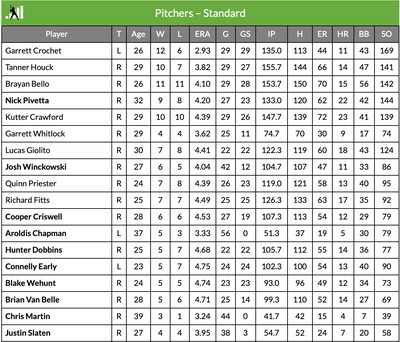
What are the computers saying about our boys?
As of this moment, we don’t know what the 2025 Boston Red Sox Opening Day roster will look like. In fact, if we want to get our Bertrand Russell on, we’d have to admit that we can’t even be sure that Opening Day 2025 will happen at all. And if we go Full-Bertrand, we’d probably have to ultimately conclude that we can’t be sure that the Boston Red Sox even exist! But that would kill our page views, so let’s hold off on that for now.
The point is that there’s still some uncertainty about next year’s Red Sox team. So you might ask: what’s the point of looking at statistical projections this far out? After all, it seems almost certain that several of the players we’d look at might get traded before Opening Day, or get injured, or decide to retire and drop out of society because philosophical acatalepsy has rocked them to the core of their being. But the answer is: because it’s fun and we need something to write about.
A few weeks ago, Dan Szymborski of FanGraphs released his 2025 ZiPS projections for the Sox. No projection model is perfect, of course, but ZiPS is considered to be one of the most accurate ones out there. ZiPS had a few big misses vis-a-vis the Sox last year. Two of the misses are probably ones you would easily guess: the system wildly under-projected the performances of Jarren Duran and Tanner Houck (join the club of human beings who all did the same thing). But it also nailed some of its guesses: it saw Nick Pivetta putting up 2.1 fWAR and he ended up at 2.0. It similarly nailed Kutter Crawford (1.8 projected compared to 1.9 IRL), and came very close on Brayan Bello (2.6 to 2.0), Connor Wong (1.5 to 1.1), Rafael Devers (3.6 to 4.0) and others.
So, let’s take a look at what the system says about the 2025 Red Sox by fWAR:

And here’s how those fWAR projections translate to real numbers:


(One quick note: as I said above, it’s too early to even know what the 2025 roster is going to look like. Case in point: Walker Buehler is not included in these projections because he wasn’t on the Red Sox when the computer spit them out. But let the record show that ZiPS sees Buehler putting up 1.4 fWAR with a 4.57 ERA in 154 innings.)
Again: these projections are not guarantees. And, by design, they disregard some hard-to-quantify human factors and things like injuries. So, e.g., you may think that Rafael Devers’ second-half performance last season was greatly impacted by his nagging shoulder injury — and it probably was! — but ZiPS ignores the injury and just looks at the cold, hard numbers. So, having said that, let’s examine a few highlights.
- As was the case with it’s projections in 2024, ZiPS sees the 2025 Red Sox as devoid of elite talent. Most Red Sox fans think of Raffy Devers as a star — and he’s certainly had extended stretches when he’s performed as one. But, ultimately, he’s only topped 5 fWAR in a season once in his career, back in 2022. And you may recall that even that performance was fueled by an outstanding first half, followed by a lackluster second half (he ended up slashing just .164/.226/.289 for the entire month of August that year).
- Jarren Duran absolutely was an elite talent in 2024, but ZiPS sees some big time regression coming. Here’s a case where, if you want to defend the superiority and elasticity of the human mind over computers, you can. ZiPS doesn’t factor in the swing changes, defensive improvements, and mental struggles that have crowded out the last few years of Jarren Duran’s life; it only looks at the numbers. If you believe that Duran has fundamentally changed the way he plays baseball since 2022, then feel free to tell ZiPS that it doesn’t know what the hell it’s talking about.
- Speaking of elite talent, ZiPS thinks the Red Sox have a new best player: welcome, Garrett Crochet! Crochet’s projected 4.6 fWAR would have made him the eighth-best pitcher in all of baseball last year. But, even here, there’s room to think that ZiPS is being unrealistically bearish. The system sees Crochet pitching just 135 innings in 2025. If you’re a computer just looking at his recent innings totals, that makes sense; Crochet’s innings totals in his four seasons of MLB ball are, respectively, 6.0, 54.1, 12.2, and 146.0. The computer sees that 146 as a major outlier and adjusts accordingly. But, if you’re a human being, you know that he (1) started his career as a reliever, (2) missed significant time due to injury, and (3) was on a strict innings limit in the second half of 2024. While no one can predict pitcher health (and it would be silly to even try), it’s perfectly reasonable to think that Crochet is going to throw a lot more than 135 innings this year, and that his season-long production will be even better as a result.
- You can make a similar mental adjustment for Tristan Casas, if you’d like. He’s played two MLB seasons, one in which he struggled to adjust to the level of play before really turning it on in the second half, and one that was effectively derailed by injuries. Now that he’s adjusted to big league ball, it’s not hard to see him putting together an All-Star worthy season if he stays healthy.
Overall, ZiPS paints the Red Sox as a team that doesn’t really have any glaring holes, but one that’s shy of greatness. The pessimistic way to look at this would be to say that of course this team is shy of greatness: they’ve been as mid as it gets for the past several years and have only made one major addition to the team this offseason. But the optimistic way to look at this would be to say that just one or two unexpectedly strong seasons could really push this team to the next level. Let’s hope so.